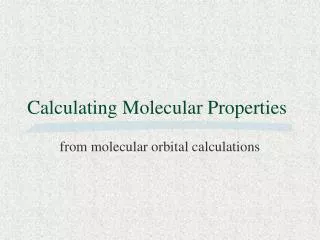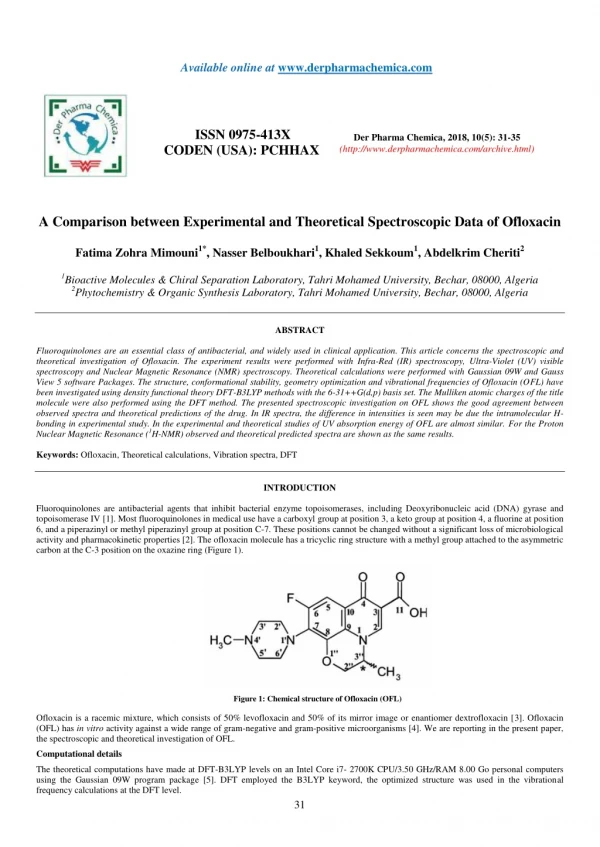A Comparison between Experimental and Theoretical Spectroscopic Data of Ofloxacin
Fluoroquinolones are an essential class of antibacterial, and widely used in clinical application. This article concerns the spectroscopic and theoretical investigation of Ofloxacin. The experiment results were performed with Infra-Red (IR) spectroscopy, Ultra-Violet (UV) visible spectroscopy and Nuclear Magnetic Resonance (NMR) spectroscopy. Theoretical calculations were performed with Gaussian 09W and Gauss View 5 software Packages. The structure, conformational stability, geometry optimization and vibrational frequencies of Ofloxacin (OFL) have been investigated using density functional theory DFT-B3LYP methods with the 6-31 G(d,p) basis set. The Mulliken atomic charges of the title molecule were also performed using the DFT method. The presented spectroscopic investigation on OFL shows the good agreement between observed spectra and theoretical predictions of the drug. In IR spectra, the difference in intensities is seen may be due the intramolecular Hbonding in experimental study. In the experimental and theoretical studies of UV absorption energy of OFL are almost similar. For the Proton Nuclear Magnetic Resonance (1H-NMR) observed and theoretical predicted spectra are shown as the same results.
★
★
★
★
★
69 views • 5 slides






